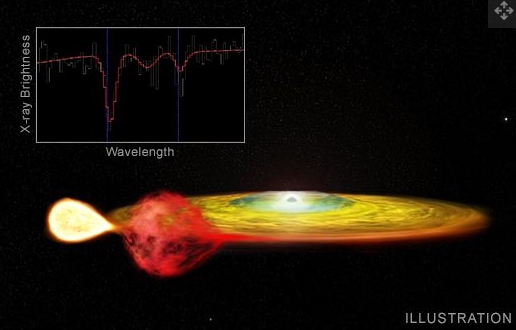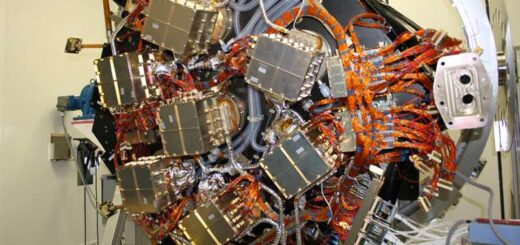Effect predicted by Albert Einstein spotted in a double-star system

Gravitational redshift, an effect predicted by Albert Einstein that is crucial for maintaining the Global Positioning System (GPS) on Earth, has been observed in a star system in our galaxy.
Within Einstein’s general theory of relativity there is an effect known as “gravitational redshift,” in which light becomes redder because of the influence of gravity; the wavelength of a photon, or light particle, gets longer and appears redder as the wavelength climbs farther away from a gravitational well.
A gravitational well is the pull of gravity exerted by large bodies in space, like Earth. Under this effect, clocks on Earth’s surface actually run slower than clocks far away and experiencing less gravity, so clocks on orbiting satellites run slower. Because of this, redshift has to be factored into calculating positions on Earth with GPS.
Now, while scientists have found absolute evidence of this effect in our solar system, they have found less evidence farther away because the observations are more difficult to make. But now, in a new study, researchers have spotted gravitational redshift in a two-star system a whopping 29,000 light-years (200,000 trillion miles or 321868800000000 kilometers) away called 4U 1916-053.
This far-off system consists of a dense core remaining from a star that’s had its outer layers stripped away, and a neutron star, which is even denser and is created when a massive star collapses in a supernova. The pair are orbiting just 215,000 miles (346,000 km) from one another, or about the distance between Earth and the moon.
In this new study, researchers using NASA’s Chandra X-ray Observatory not only discovered this system but also were able to show the effects of gravitational redshift. The scientists did this by analyzing X-ray spectra, or the amount of X-rays absorbed at different wavelengths, of the stars in this system.
Click here for more Space.com videos…
Not only is this an important discovery because it is outside of our solar system, but it is the first strong evidence of this effect in a two-star system that has had either a neutron star or black hole, according to a statement from the Chandra X-ray Observatory. The scientists have won more time with Chandra in the upcoming year to study the system in more detail, according to the statement.
This work was accepted for publication to the Astrophysical Journal Letter; a version of the paper was uploaded to the preprint server arXiv.org on Aug. 3.



 Creators of mankind
Creators of mankind Description of “Tall white aliens”
Description of “Tall white aliens” Where they came from?
Where they came from? About hostile civilizations
About hostile civilizations The war for the Earth
The war for the Earth “Tall white aliens” about eternal life
“Tall white aliens” about eternal life Video: “Nordic aliens”
Video: “Nordic aliens” Aliens
Aliens Alien encounters
Alien encounters The aliens base
The aliens base UFO
UFO Technology UFO
Technology UFO Underground civilization
Underground civilization Ancient alien artifacts
Ancient alien artifacts Military and UFO
Military and UFO Mysteries and hypotheses
Mysteries and hypotheses Scientific facts
Scientific facts


















